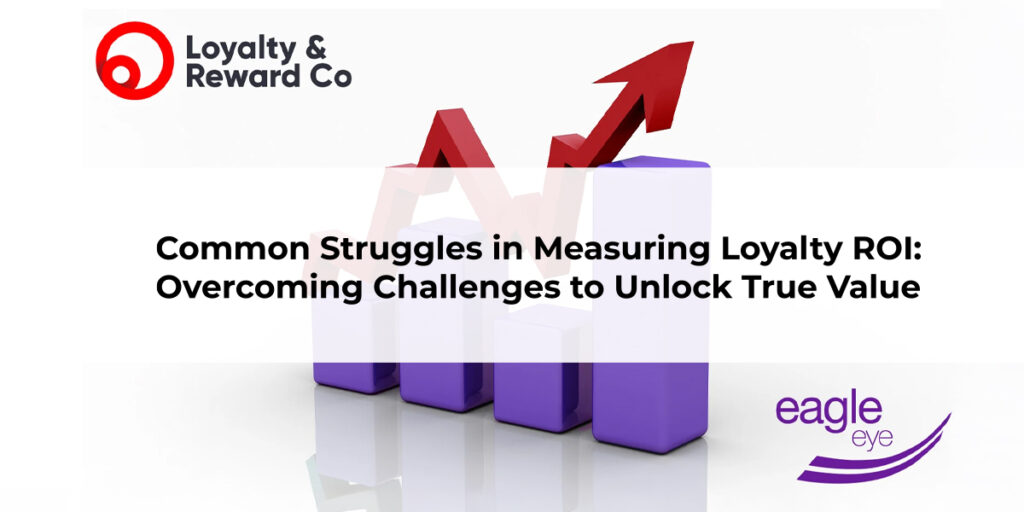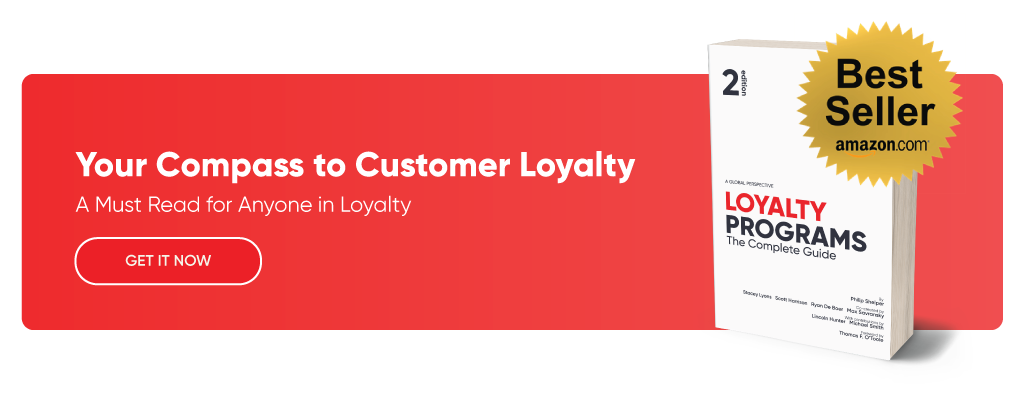
Co-written by Sarah Jarvis from Eagle Eye, and Hunter Murray and Anand Patel from Loyalty & Reward Co
Understanding and measuring the ROI of a loyalty program is essential for any business investing in loyalty. However, accurately measuring loyalty ROI isn’t always straightforward. Loyalty managers face several challenges, from fragmented data to complex attribution which make it difficult to capture the full value of their programs. In this article, we’ll explore the common struggles in measuring loyalty ROI and discuss strategies to overcome them.
Fragmented Data: A Barrier to Comprehensive Insights
One of the biggest hurdles in both executing and measuring loyalty programs is fragmented data. With customers interacting across various channels, whether in-store, online, or through mobile apps, data is often scattered across different systems, from point-of-sale (POS) to customer relationship management (CRM) platforms. Without a centralized view, it’s impossible to harness the power of omnichannel personalization, or to analyze customer behavior holistically, limiting the accuracy of ROI calculations.
Fragmented data also means that essential metrics, such as customer lifetime value (CLTV) and redemption rates, may not be accurately captured. These metrics are key to understanding the long-term value a loyalty program delivers, but if they’re incomplete or isolated within silos, the picture remains unfinished.
Solution: To tackle data fragmentation, loyalty managers need to invest in tools that consolidate data across channels. Centralizing data collection and creating a unified view of each customer’s journey will enable accurate ROI measurement.
Complex Attribution: Untangling the Customer Journey
Attributing ROI directly to a loyalty program is complex, especially in an omnichannel environment where customers engage with the brand across multiple touchpoints. Was a purchase made because of a loyalty reward, or was it due to an email promotion? Or perhaps it was influenced by social media engagement? Determining the exact impact of a loyalty program on sales or customer retention is challenging when multiple factors contribute to each outcome.
This complex attribution problem is often compounded by the time lag between loyalty interactions and customer actions. A customer may earn points today but redeem them against a purchase months later. Without sophisticated tracking mechanisms, it’s tough to link these events accurately to loyalty ROI.
Solution: One way to improve attribution accuracy is through advanced analytics and customer journey mapping. By tracking the entire customer journey and applying weighted attribution models, brands can better understand the role that loyalty plays in customer decisions, giving a more accurate picture of ROI.
Short-Term Focus vs. Long-Term Value
Many loyalty programs are designed to foster long-term customer relationships, yet businesses often focus on measuring short-term financial returns. This short-term mindset can undermine the true value of loyalty initiatives. While some benefits of a loyalty program, such as immediate sales boosts, are measurable in the short term, others, like increased brand advocacy and customer lifetime value, take time to materialize.
When program managers focus solely on short-term ROI, they risk undervaluing these long-term impacts. This can lead to underinvestment in the program or pressure to alter strategies that might otherwise have yielded significant returns over time.
Solution: To capture the full value of a loyalty program, it’s important to take a balanced approach. Alongside short-term financial metrics, track long-term indicators like CLTV, repeat purchase rates, and brand advocacy. This approach ensures that loyalty ROI is measured holistically, reflecting both immediate and future gains.
What’s Next?
Now that we’ve identified the common struggles in measuring loyalty ROI, our next article will guide you through practical methods and key strategies for maximizing your loyalty ROI. Stay tuned to learn how to boost your loyalty program’s financial impact.
Loyalty & Reward Co have a proven method for helping businesses calculate loyalty ROI. Connect with us to discuss how our LROI™ approach can help you.
Eagle Eye powers loyalty programs for retailers across the world and has personalization solutions proven to deliver a 7:1 ROI. Find out more about Eagle Eye here.

